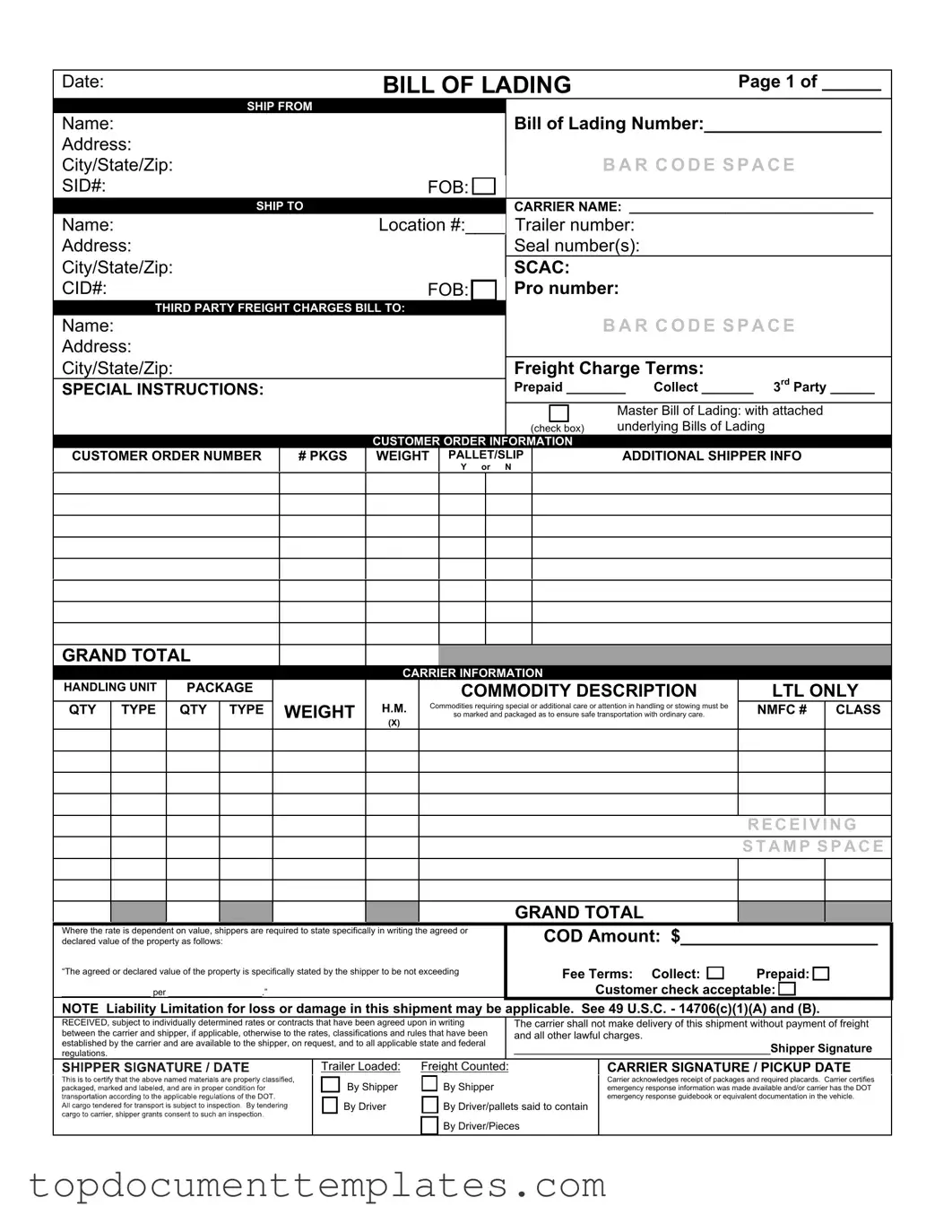Blank Bill of Lading with a Supplement PDF Form
A Bill of Lading with a Supplement form is a crucial document in the shipping industry, serving as a receipt for goods and a contract between the shipper and carrier. This form includes additional information or terms that may not be covered in the standard Bill of Lading, ensuring all parties are clear on their responsibilities. For seamless shipping operations, consider filling out the form by clicking the button below.
Open This Form
